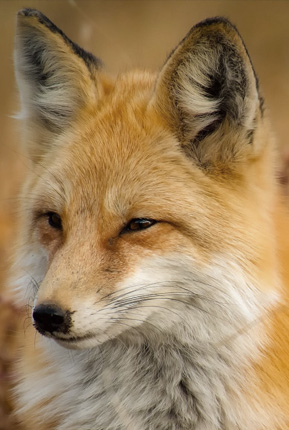
All Animals

The Fox: Clever and Adaptable Predator of the Wild
The fox, known for its cunning nature and adaptability, is one of the most intriguing and widespread members of the canid family. With its striking appearance, sharp intellect, and versatile hunting skills, the fox has captured the fascination of people around the world. Found in diverse habitats across the globe, foxes play a crucial role in their ecosystems and exhibit remarkable adaptability.
Foxes are characterized by their slender bodies, bushy tails, and pointed snouts. Their fur varies in color depending on the species and environment, ranging from the classic red of the red fox to the white and gray of the arctic fox. Adult foxes typically weigh between 6 to 24 pounds (2.7 to 11 kilograms) and have a body length of about 18 to 35 inches (45 to 90 centimeters), excluding their tails. Their keen senses of sight, smell, and hearing make them highly effective predators and scavengers.
The red fox is the most widespread and adaptable species, found throughout North America, Europe, Asia, and parts of Africa. Its ability to thrive in various environments, from forests and grasslands to urban areas, demonstrates its remarkable adaptability. Other notable species include the arctic fox, which is adapted to cold, tundra environments, and the fennec fox, known for its large ears and desert habitat.
Foxes are omnivorous and have a varied diet that includes small mammals, birds, insects, fruits, and vegetables. Their hunting strategy involves a combination of stealth, agility, and cunning. Foxes use their acute hearing to locate prey, often pouncing from a crouched position to catch animals such as mice, voles, and rabbits. They also scavenge for food and will readily adapt their diet to available resources.
Socially, foxes are generally solitary animals, although they may form small family groups. In the breeding season, pairs of foxes come together to mate and raise their young. The female, or vixen, gives birth to a litter of kits, which are born blind and helpless. Both parents participate in caring for the kits, providing food and protection until they are old enough to fend for themselves. Fox kits are playful and curious, engaging in activities that help develop their hunting skills and social behaviors.
Foxes have a significant impact on their ecosystems. As predators, they help control populations of small mammals and insects, contributing to the balance of their habitats. Their scavenging behavior also aids in the decomposition process and nutrient recycling. In urban environments, foxes play a role in managing rodent populations, demonstrating their adaptability to human-altered landscapes.
Despite their adaptability, foxes face threats from habitat loss, hunting, and disease. Urban expansion and agricultural development can reduce their natural habitats and limit their access to food. In some areas, foxes are hunted for their fur or considered pests due to their potential to prey on poultry and livestock. Additionally, diseases such as mange and rabies can impact fox populations.
Conservation efforts for foxes often focus on habitat preservation and responsible management practices. Protecting natural habitats and reducing human-wildlife conflicts are essential for maintaining healthy fox populations. Public education about the ecological role of foxes and the importance of coexistence can also contribute to their conservation.
Foxes have a rich presence in folklore, mythology, and popular culture. They are often depicted as cunning and clever animals, symbolizing traits such as intelligence and adaptability. Their appearance in stories, cartoons, and literature reflects their status as one of nature’s most intriguing and charismatic creatures.
In summary, the fox, with its cleverness, adaptability, and ecological role, is a fascinating and vital component of the natural world. Its ability to thrive in diverse environments and its impact on ecosystems underscore the importance of understanding and protecting this remarkable animal. By supporting conservation efforts and fostering a greater appreciation for foxes, we contribute to the preservation of these enigmatic and essential creatures.
